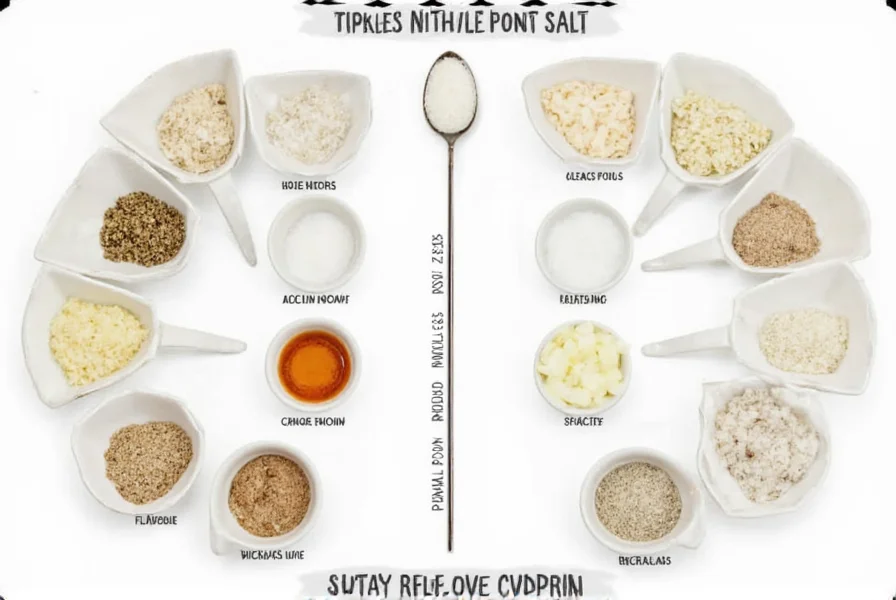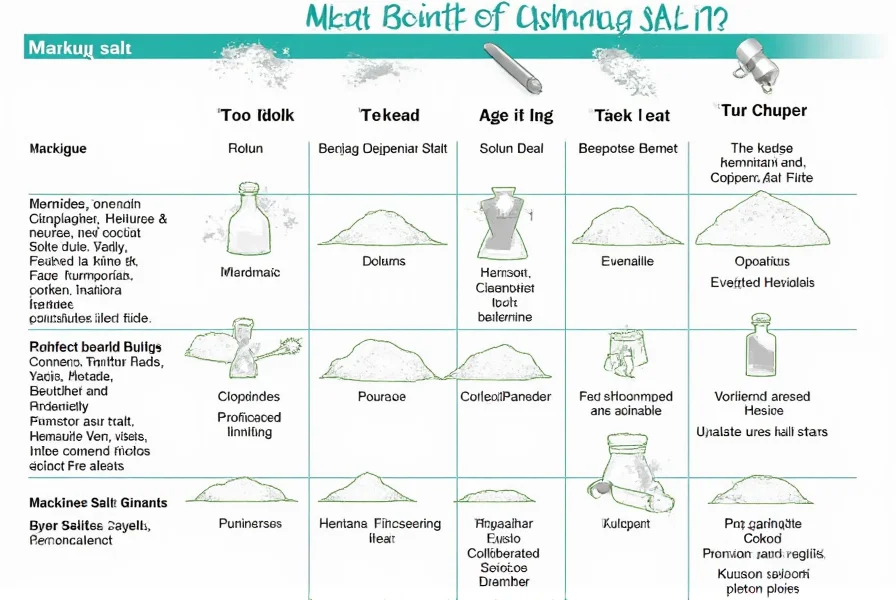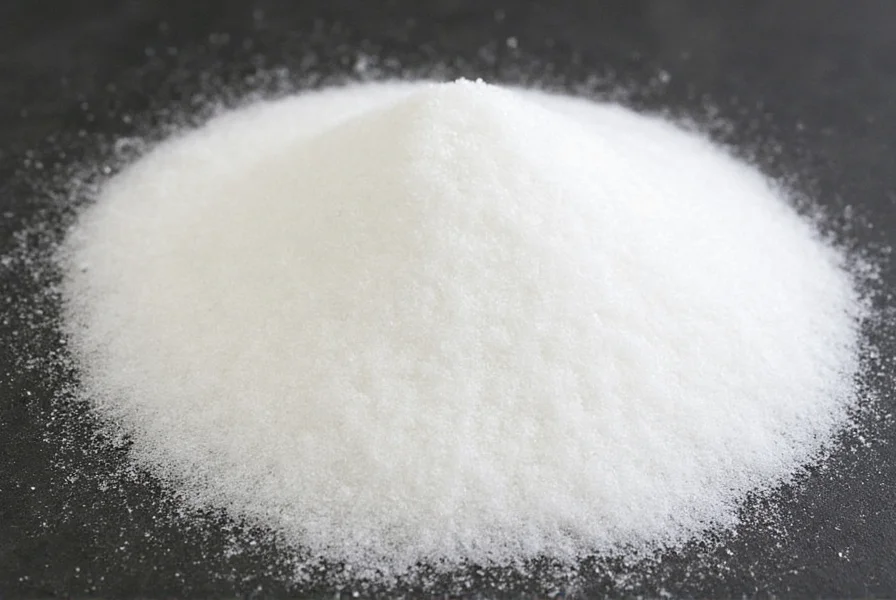Understanding what's in season salt helps home cooks make informed choices about flavoring their dishes. Unlike plain table salt, season salt blends deliver multiple flavor dimensions in one convenient shaker. These versatile seasoning mixes have become kitchen staples for good reason—they simplify the seasoning process while enhancing food with complex flavors.
What Exactly Is Season Salt?
Season salt refers to a pre-mixed seasoning blend where sodium chloride (table salt) serves as the base ingredient, enhanced with various dried herbs, spices, and flavor enhancers. These blends create consistent seasoning without requiring multiple containers on your countertop. The concept emerged as home cooking evolved to value convenience without sacrificing flavor complexity.
Standard Ingredients Found in Most Season Salt Blends
While formulations differ between manufacturers and regional variations, most commercial season salt products contain these core components:
| Ingredient | Typical Percentage | Purpose |
|---|---|---|
| Salt (sodium chloride) | 60-85% | Base ingredient providing primary seasoning and preservation |
| Garlic powder | 5-15% | Adds savory, aromatic depth |
| Onion powder | 5-15% | Contributes sweet, pungent notes |
| Paprika | 2-8% | Provides color and mild sweetness |
| Anti-caking agents | <2% | Prevents clumping (often calcium silicate or silicon dioxide) |
Brand-Specific Variations in Season Salt Ingredients
When researching what spices are in Lawry's season salt versus other brands, notable differences emerge. Lawry's, one of the most recognized season salt products in North America, includes additional ingredients beyond the basics:
- Lawry's Seasoned Salt: Salt, onion powder, garlic powder, paprika, spices (including turmeric), silicon dioxide (anti-caking agent), and natural flavors
- McCormick Season All: Salt, garlic, onion, paprika, black pepper, corn starch, and tricalcium phosphate
- Generic store brands: Typically contain salt plus garlic powder, onion powder, and paprika with minimal additional spices
International variations exist too. British "seasoned salt" often contains more herbs like thyme and marjoram, while some Caribbean versions incorporate allspice and chili peppers for heat.

How Season Salt Differs From Regular Salt
Many home cooks wonder if season salt is just salt and pepper. The answer is no—season salt contains multiple flavor components beyond simple sodium chloride. Regular table salt serves one primary function: enhancing flavor through sodium. Season salt, however, delivers a complete flavor profile that can replace multiple individual seasonings.
The additional ingredients serve specific culinary purposes:
- Garlic and onion powders provide savory umami notes without fresh preparation
- Paprika contributes color and mild sweetness without heat
- Spice blends create complexity that plain salt cannot achieve
- Anti-caking agents ensure consistent flow from the shaker
Creating Your Own Homemade Season Salt
For those seeking to control exactly what goes into their seasoning or accommodate dietary restrictions, homemade season salt offers complete ingredient transparency. A basic recipe includes:
- 1 cup fine sea salt or kosher salt
- 2 tablespoons garlic powder
- 2 tablespoons onion powder
- 1 tablespoon paprika
- 1 teaspoon dried thyme
- 1 teaspoon dried rosemary (crushed)
- ½ teaspoon black pepper (optional)
Mix thoroughly and store in an airtight container. This customizable blend allows you to adjust ingredients based on personal preferences or dietary needs—simply omit any components you wish to avoid. Understanding common season salt blend components helps you modify recipes to suit your taste preferences.

Dietary Considerations When Using Season Salt
Consumers with specific dietary requirements should carefully review ingredient lists, as some commercial blends contain:
- Added sugar (in some regional formulations)
- Monosodium glutamate (MSG) in certain brands
- Anti-caking agents that may concern some health-conscious consumers
- Unexpected allergens like celery seed in specialty blends
Those managing sodium intake should remember that season salt still contains significant sodium content—typically 190-220mg per ¼ teaspoon serving. The additional ingredients don't reduce the sodium concentration; they merely accompany it.
Practical Applications for Season Salt
Chefs and home cooks use season salt blends for various applications where multiple seasonings would otherwise be needed:
- Rubbing on meats before grilling or roasting
- Seasoning vegetables before roasting
- Enhancing popcorn or snack foods
- Adding flavor to soups and stews
- Creating compound butters
The convenience factor makes season salt particularly valuable for quick weeknight meals when time constraints limit elaborate seasoning preparations. Knowing what makes season salt different from regular salt helps cooks use it more effectively in their culinary creations.
Frequently Asked Questions
What spices are typically included in season salt blends?
Most season salt blends contain garlic powder, onion powder, and paprika as primary additional ingredients beyond the base salt. Many also include turmeric for color, black pepper for heat, and various dried herbs like thyme or rosemary. The exact combination varies by brand and regional preferences.
Does season salt contain MSG?
Most standard season salt products like Lawry's and McCormick do not contain MSG as an ingredient. However, some specialty or regional blends might include it. Always check the ingredient label if you're specifically avoiding MSG, as formulations can change and vary by market.
Is season salt just salt and pepper?
No, season salt contains multiple ingredients beyond just salt and pepper. While pepper may be included in some blends, most season salts feature garlic powder, onion powder, paprika, and various herbs. The "season" in the name refers to these additional flavor components that create a complete seasoning blend.
What are the anti-caking agents in season salt?
Common anti-caking agents in season salt include calcium silicate, silicon dioxide, and tricalcium phosphate. These food-safe additives prevent the fine salt crystals from clumping together due to moisture absorption, ensuring the product flows freely from its container. They typically comprise less than 2% of the total blend.
Can I make a low-sodium version of season salt?
Yes, you can create a low-sodium alternative by using a salt substitute as the base (like potassium chloride blends) or by significantly reducing the salt content and increasing the proportion of herbs and spices. Many commercial "lite" versions exist, but homemade versions allow complete control over sodium levels while maintaining flavor complexity.











 浙公网安备
33010002000092号
浙公网安备
33010002000092号 浙B2-20120091-4
浙B2-20120091-4